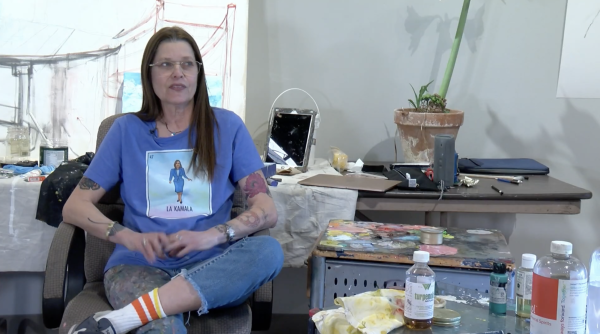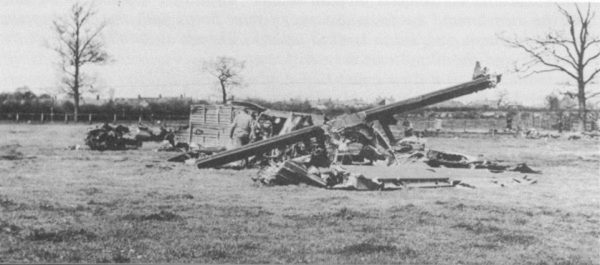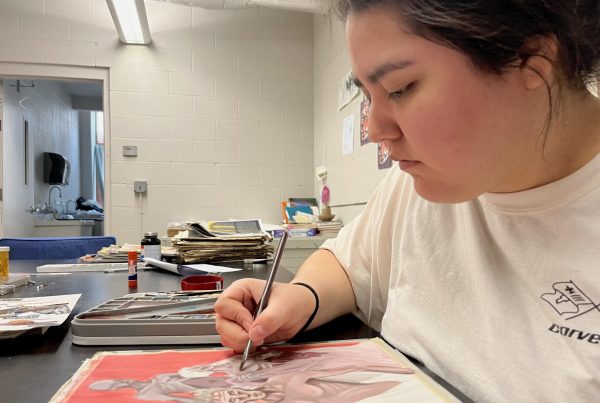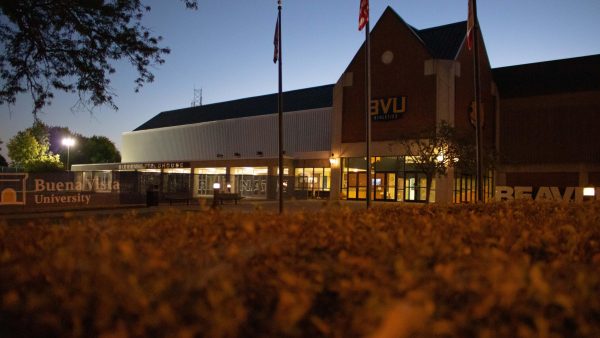Monks Create Intricate Sand Mandala in BVU Art Gallery
On Oct. 30, 2017, monks from Gaden Shartse Monastic College in south India arrived at Buena Vista University to begin a sand mandala they would work on over the course of a week. Founded in 1969, the monastery sought to re-establish monastic traditions of Tibet. Now, the school holds reputation as the leader in the field of Buddhist and Tibetan studies.
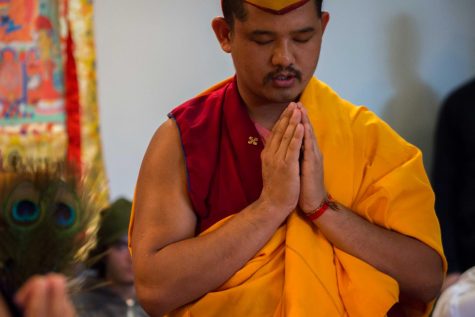 I had the opportunity to interview Lobzang Yeshey, a 29-year-old monk who often serves as a translator for the group while on tour. When he was young, he didn’t choose to be a monk. Instead, the decision was made by his parents. He explained that this is very common in India. If a couple has a son, often they will send him to a monastery to become a monk.
I had the opportunity to interview Lobzang Yeshey, a 29-year-old monk who often serves as a translator for the group while on tour. When he was young, he didn’t choose to be a monk. Instead, the decision was made by his parents. He explained that this is very common in India. If a couple has a son, often they will send him to a monastery to become a monk.
“The main teachings are to make you a good person, with a mind full of love, compassion, and kindness towards others,” shared Yeshey.
For a week, the visiting monks worked on a sand mandala in the BVU art gallery. Yeshey explained three purposes for making the mandala. First, according to Yeshey, the mandala is a way to bless the area, our community and our school, as well as everyone who attended the events or stopped by to watch the creation. Another reason is that it is a way for the monks to showcase this kind of art and share Buddhist traditions and teachings. The third reason for making a sand mandala is to raise funds for their monastery. The Gaden Shartse Monastery began touring in the 1990’s in hopes of spreading Buddhist teachings and raise money.
Currently there are over 1,300 monks attending the Gaden Shartse Monastic College. Yeshey explained, the monastery takes care of everything. Food, clothing, text books, and housing are free for the monks; therefore, fundraising is an important piece that keeps the monastery running.
There are many mandala designs representing different Buddhist deities. For the event at BVU, the monks chose the mandala made for Vajrasattya, the Buddha of Purification. A sign explaining Vajrasattya said, “The practice of the Vajrasattya Deity purifies all negative actions committed by our body, through our speech, and in our minds.”
This photo gallery features the tools used to create the mandala.
This next gallery shows some close up progress images focused on the details of the mandala as it was being created. See the end of this article for a video showing more of the process.
Yeshey explained that at their monastery, there are monks from all around the world. About 60% of them are Tibetan. Others come from Northern India, Eastern India, Nepal, Bhutan, Taiwan, Singapore, Spain, Israel and the United States. Monks can age from 3-years-old to over 90-years-old.
According to Yeshey, this is what a normal day in the life of a monk at Gaden Shartse Monastery looks like:
5:30 a.m. – A bell rings signaling monks for morning prayer. It’s about a two-hour session including breakfast, prayer, rituals, and meditation.
10:30 a.m. – Younger children go to school.
12 to 2 p.m. – At this point in the day, the weather is so hot, nothing can really be accomplished, so most monks take a nap.
3 to 5 p.m. – More school.
5 to 6:30 p.m. – The monks have dinner and are free to do whatever they like. Some go for more classes, go shopping, or do other work.
6:30 to 10 p.m. – A debate session takes place. Monks discuss Buddhist philosophies and debate and question in order to learn.
10:30 p.m. – The monks are free to go back to their living spaces. Yeshey shared that most older monks will use this time to continue studying because it’s easier to focus when the weather is cooler and the younger monks have gone to bed, leaving the monastery quiet.
While on campus, a few students invited the visiting monks out for a game of the BVU sport of lawn golf. Unfortunately the game was cut short due to extremely chilly weather, but that didn’t stop them from having fun.
On behalf of the University, thank you for visiting our campus!







